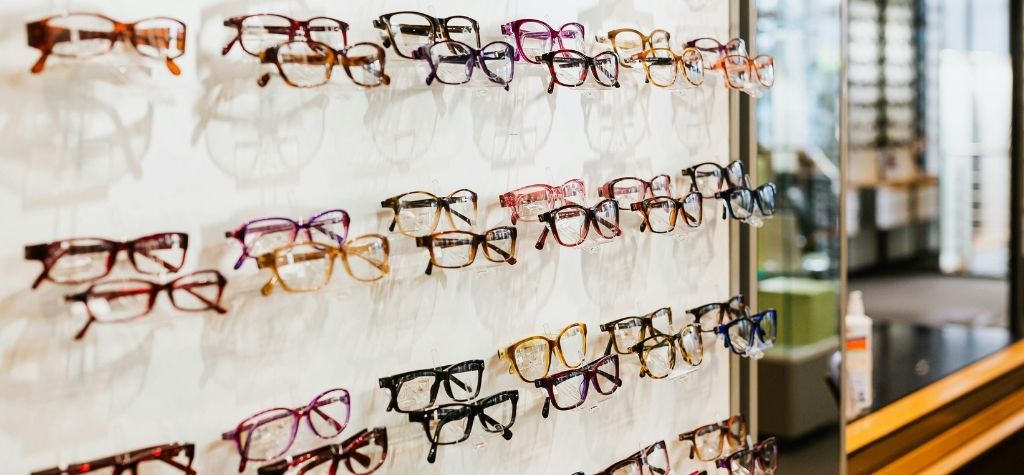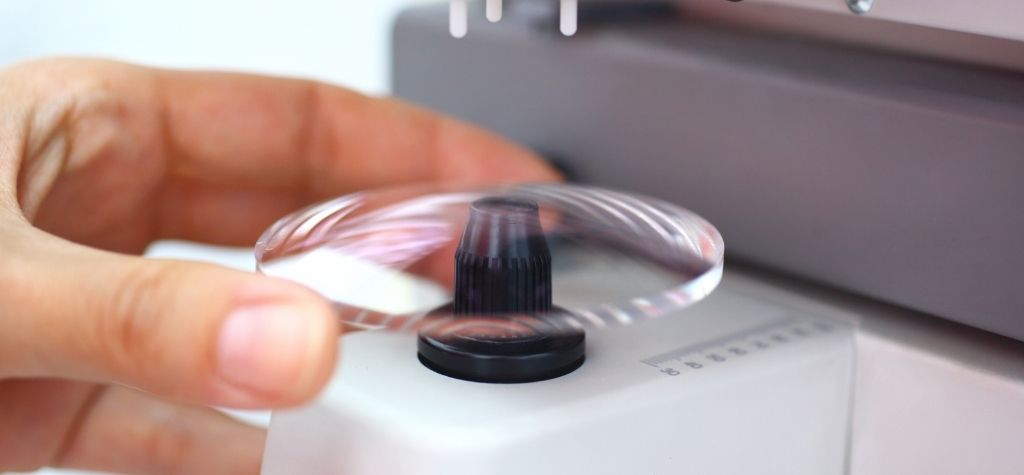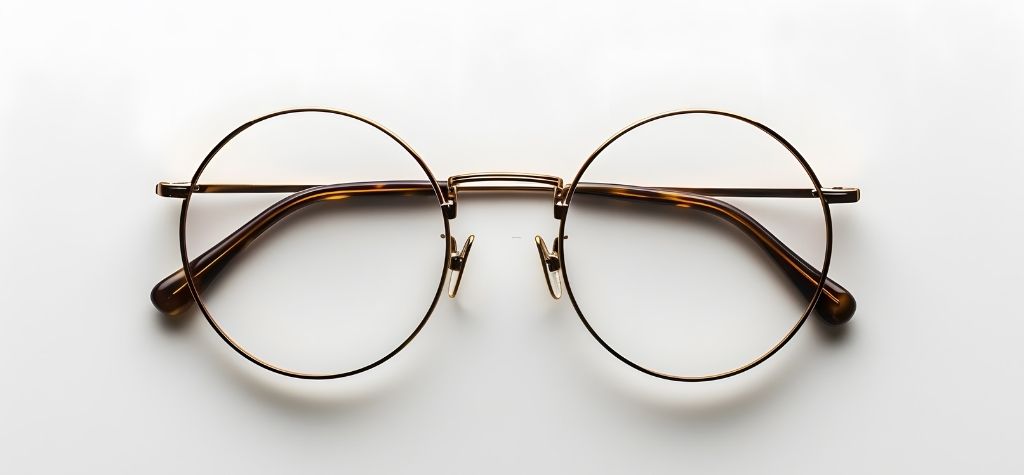Each year, millions of eyeglasses are made, shipped, and eventually tossed out. This adds up to a huge environmental toll. For example, one report notes that “more than 4 million pairs of reading glasses in North America are thrown away each year” – about 250 metric tons of non-biodegradable waste. Traditional glasses frames often rely on petroleum-based plastics or metal mining. Making lenses and frames is energy- and resource-intensive. That means pollution, plastic waste, and millions of old glasses in landfills.
Did you know? “Less trash – Millions of frames and lenses that would have ended up in landfills can be reused or recycled.”
Despite this history, interest in eco-friendly eyewear is growing. In one study, most people had thrown away 1–5 pairs of glasses in their lifetime, and only 5% had tried recycling them. However, when survey respondents were told about environmentally friendly frame options, 87% said they would consider them. In other words, consumers want greener glasses if they know about them. This article looks at why sustainability matters for eyewear and what steps the industry and consumers can take. We’ll explore frame materials, lens production, manufacturing processes, and recycling programs – and ask: Can glasses ever be truly sustainable?
Why Sustainability Matters for Eyewear

Glasses might seem harmless, but they involve plastic, metal, and chemicals at every step. Traditionally, many frames and cases were made of hard-to-recycle plastics. Production machines in factories consume a lot of electricity and water. Waste plastic, metal offcuts, and chemical byproducts can pollute air and water if not handled safely. And when people upgrade their glasses, most old pairs end up in the trash, because few know how to recycle them.
A recent industry analysis highlights the scale of waste: “Up to 75% of the cellulose acetate used by eyewear manufacturers is typically wasted” during making frames. In other words, three-quarters of raw material for some plastic frames can end up as scrap. Over time, this adds up. One source notes that eyewear’s carbon footprint includes the energy, waste, and shipping involved in every step .
All these factors mean the eyewear industry has a noticeable environmental impact. A large eyewear company market report valued the industry at over $183 billion (USD) in 2023, and pointed out that plastic use for making and shipping glasses generates huge waste and carbon emissions. In short, every pair of glasses adds a bit to pollution and climate change – from mining metals to burning fossil fuels for plastics.
However, the environmental problems of the past are now sparking innovation. Eye care companies and brands are rethinking how to make glasses. New laws and consumer pressure (like the Paris Climate Agreement goals) push manufacturers to cut waste, switch to renewables, and rethink materials. The result is a wave of “green” glasses: frames made from recycled or natural materials, lenses produced with less waste, and even take-back programs. Next we’ll explore what sustainable materials and practices are emerging.
Eco-Friendly Materials for Frames
One of the biggest changes is what frames are made of. Instead of always using new plastic or mined metals, many companies now use recycled or bio-based alternatives. These greener materials reduce the need for new resources and cut waste.
- Recycled Plastics: Several brands repurpose plastic waste into eyewear. For example, Costa’s “Untangled” collection makes frames from recycled fishing nets (up to 100% recycled material). Sea2see (a Spanish brand) uses recovered ocean plastic. Others grind up used plastic bottles or manufacturing scraps to mold new frames. Arnette, an eyewear label, created a capsule collection with 95% recycled plastic – much of it from leftover factory bits. By using plastics that were already made (instead of fresh petrochemicals), these frames divert trash from landfills and reduce carbon emissions from new plastics.
- Plant-Based Plastics (Bioplastics/Bio-acetate): Ordinary plastic comes from oil. Now, bio-based plastics are grown instead. A popular example is bio-acetate. Traditional acetate (a kind of strong plastic for glasses) is made from chemicals tied to fossil fuels. Bio-acetate replaces some of that with plant-based content like cotton or wood pulp. For instance, Arnette’s bio-acetate frames use a plasticizer made from renewable sources – resulting in frames that are 54–67% bio-base. In simple terms, over half of the material in each frame comes from plant or seed sources (not oil). When these frames reach end-of-life, the natural components can break down more easily. Big brands like Ray-Ban have also launched “bio-nylon” sunglasses where at least 40% of the plastic is from castor oil plants. Using bio-plastics cuts greenhouse gases because crops (like cotton or castor plants) absorb CO₂ as they grow.
- Fast-Growing Woods & Bamboo: Some eco-frames are made of wood or bamboo. Bamboo, in particular, is popular because it grows quickly without pesticides. AllAboutVision notes that bamboo is a “fast-growing resource” and thus more sustainable than slow trees. Wood frames usually come from forests that follow FSC certification standards. The Forest Stewardship Council (FSC) certifies that wood comes from “responsibly managed forests”. In those forests, logging is controlled to protect ecosystems and ensure trees are replanted. Wood and bamboo frames are fully renewable and biodegrade naturally if thrown away (unlike plastic). The tradeoff is that wood frames may cost more and need more care, but they look stylish and have a smaller carbon footprint once grown properly.
- Recycled Metals: Metal frames (aluminum, stainless steel, titanium) are strong and recyclable. The great thing about many metals is that they can be melted down and reused indefinitely without losing quality. Precision Eyewear Lab explains that “metals like aluminium and steel can be recycled indefinitely without losing their properties,” so making frames from recycled metal saves mining new ore. Using recycled aluminum or steel drastically cuts energy use (mining and refining metal is energy-intensive). Companies like Eco Eyewear and others now offer frames using recycled aluminum or leftover metal stock. Some designers even upcycle scrap from industries (for example, CNC cutters of aircraft parts) into glasses.
By switching to these materials, eyewear makers shrink the life-cycle impact of glasses. Instead of a new plastic bottle or virgin petroleum, a pair of frames might come from discarded nets, old plastic, or fast-growing plants. It’s not just frames – even sunglass lenses and cases are starting to use recycled plastics and paper. The result: less raw plastic and metal demand, and fewer pounds of new waste.
Greener Lenses and Components

Frames often get all the attention, but lenses and other parts matter too. Most prescription lenses today are plastic (polycarbonate or CR-39) rather than glass. These plastics are durable but still fossil-derived. The good news is lens manufacturers are also innovating:
- Lens Manufacturing Improvements: Major lens makers like ZEISS have revolutionized how lenses are made. Modern freeform lens machines use much less water and energy than old grinders. For example, some new methods cut polishing time from 30 minutes to about 1.5 minutes, drastically reducing water use. ZEISS reports saving 450 million liters of water per year in their plants. They also switched to 100% green energy at many sites, cutting CO₂ by tens of thousands of tons.
- Recycling Lens Waste: Even lens cutting and edging generate scraps. Good news: some of this waste can be reused. ZEISS notes that leftover polycarbonate from lens cutting can be melted down and made into new lens blanks. Other lens materials (like CR-39) can’t be melted, but the pellet waste can sometimes be used in other industries. This reuse of lens offcuts means less new plastic needs to be produced overall. In essence, every bit of unused lens material is being reclaimed instead of thrown out.
- Bioplastic and Coatings: Research is ongoing into fully biodegradable lens materials and non-toxic coatings. Some startup companies are experimenting with plant-based or water-soluble lens substances. These aren’t mainstream yet, but they show the industry is looking beyond oil-based plastics. Meanwhile, lens coatings (anti-scratch, anti-glare) are being developed to be free of harmful chemicals and easier to clean, which extends the life of lenses and reduces the need for replacement.
In short, lens production is getting cleaner. By using advanced technology, recycled scraps, and renewable energy, lens makers cut down their carbon footprint. The leftover lens scrap is now a resource, not waste. This means your glasses’ lenses can be greener, too – not just the frames.
Cleaner Production and Packaging
Beyond materials, how glasses are made and packed makes a difference. Many eyewear firms are improving factory practices to be more eco-friendly.
- Renewable Energy & Efficiency: Some factories now run on solar or wind power. In fact, All About Vision reports that “numerous companies are committing to using solar or wind power in their operations”. Along with that, energy-efficient machines and LED lighting cut electricity use. Reducing water use (through recycling systems) and cutting scrap waste on the production line are also key practices. In one example, EssilorLuxottica committed to powering more operations with wind energy as part of its “Eyes on Circularity” program.
- Waste Minimization: Traditional eyewear making often threw away excess acetate, metal, and mold materials. Now companies look to zero-waste designs. For instance, some frame makers adjust cutting patterns so that offcut shapes fit into new frame blanks. Some have internal programs that grind up leftover plastic and melt it into rods for injection molding. The result is far less production scrap. And all lens factories nowadays recycle coolant and clean waste water before it leaves the plant. The goal is simple: use more of the materials you buy, and waste less in scraps.
- Eco-Friendly Packaging: Packaging is a hidden environmental cost. Many eyewear cases and boxes used to be plastic-coated or foam-lined. Now, companies are swapping these for sustainable options. For example, some brands use cases made of recycled paperboard or sustainably harvested wood. Cleaning cloths are increasingly made from recycled polyester (plastic bottles), and boxes are plain cardboard. One eyewear packaging report notes that industry leaders are shifting towards biodegradable and recyclable materials. Using wood or leather-look cases (instead of plastic) and eliminating unnecessary plastic wrap can sharply cut plastic waste.
By the time your glasses arrive, they can thus be made with far fewer emissions and wastes. In the best factories, sustainability is built into every step – from using solar panels to crafting cases out of recycled cardboard. This means each pair of “green” glasses truly involves much less environmental harm.
Extending the Life of Glasses

A key part of sustainability is longevity. The longer you keep a pair of glasses, the fewer new ones get made, and the less waste accumulates. The eyewear industry is encouraging this in a few ways:
- Durable Design: Some brands design frames to last longer. Stronger hinges, scratch-resistant coatings, and corrosion-resistant materials mean glasses don’t break as easily. If a frame lasts 5–10 years instead of 2, that’s a lot of waste avoided.
- Repair Services: Many eyewear retailers and brands now offer repairs. For example, Ray-Ban has repair centers where you can replace parts instead of buying new frames. If a temple arm or nose pad breaks, it can often be fixed or swapped. The message is: wear your glasses as long as you can. Repairing old glasses is far greener than discarding them.
- Take-Back & Donation Programs: Several companies and charities ask customers to bring back old glasses. These might be refurbished and given to people in need, or recycled properly. All About Vision notes that “several companies offer ways for customers to donate their old glasses. This allows them to be reused or properly disposed of.”. In the US, groups like Lions Club collect thousands of donated glasses for overseas distribution. Retailers like Warby Parker and LensCrafters also have recycling partnerships. When old glasses aren’t just thrown away, it’s a big win for the planet.
“Try brands that prioritize responsible practices… Continue the cycle by responsibly recycling or donating your old glasses… Tell your friends about eco-friendly eyewear options.”
This quote from eyewear experts captures the idea: use your glasses fully, recycle or donate them, and spread the word (we’ll discuss this more below).
Overall, smarter design and product care mean fewer glasses need to be made. According to All About Vision, these changes lead to “less trash – millions of frames and lenses that would have ended up in landfills can be reused or recycled,” as well as “cleaner air” from lower emissions. In practice, a pair of sustainable glasses might last a decade and then be repurposed, instead of ending up as waste after a year.
Challenges and Reality Checks
It’s important to be realistic. Glasses aren’t 100% green yet. Even recycled and bio-based materials have impacts. For example, growing and processing cotton (for acetate) uses water and land. Transporting frames across the globe emits carbon. Very few eyewear companies are fully carbon-neutral (although some, like Eco Eyewear, even plant a tree for every frame sold to offset emissions).
Moreover, not all “eco” claims are equal. There is a risk of greenwashing – brands marketing products as “natural” or “sustainable” without strong evidence. Consumers should look for transparency (for example, third-party certifications or published carbon footprint reports).
And currently, eco-friendly glasses often cost more to make. Biodegradable plastics and certified wood are pricier than cheap petroleum plastics. Until more factories switch to renewables, making glasses still uses energy. Finally, recycling old glasses isn’t yet easy for every consumer – you may have to drop them at an optometrist or mail them in.
In summary, while big strides have been made, eyewear sustainability is a work in progress. Glasses can be much more sustainable than before, but they still have some footprint. We should think in terms of making them as green as possible, rather than perfectly zero-impact.
How Consumers Can Help

Even if technology and companies are shifting, consumers have power too. Here are some practical steps you can take to support sustainable eyewear:
- Choose Eco-Friendly Brands: Look for eyewear companies that highlight recycled or bio-based materials. Some labels (like Eco Eyewear, Stella McCartney Eyewear, and many new independent brands) are built around sustainability. They often explain what percentage of their frames are recycled or plant-derived. Even large brands now have “green” lines (e.g. Ray-Ban’s bio-frame collections). Supporting these products sends a signal to the industry.
- Repair Don’t Replace: If your frames or lenses have minor damage, seek repair instead of buying new. Many local opticians offer simple fixes. Even self-repair kits can fix a loose screw or broken tip. By doubling the life of your glasses, you halve the waste and energy needed for a replacement.
- Recycle or Donate Old Glasses: Don’t throw away old frames or prescription sunglasses. Find a recycling center or charity. For example, organizations like Lions Clubs International collect glasses and distribute them to people in developing countries. Some optical shops have recycling drop-boxes. Reusing lenses in another pair is even possible if optometrists refit them. Every pair kept out of the landfill helps the planet.
- Spread the Word: Tell friends and family about sustainable eyewear options and recycling. The more people know, the more demand grows. As All About Vision advises: “Spread the news – Tell your friends about eco-friendly eyewear options. Share how eyeglasses can be recycled, reused and repaired.” Word-of-mouth can make sustainable frames as common as fast fashion frames.
By making small changes in buying and caring for glasses, each of us can lower our own vision-care carbon footprint. If we all did, it would push the industry further down the sustainability path.
Conclusion
Modern glasses don’t have to be the environmental villains they once were. Advances in materials and manufacturing mean eyeglasses can be made with recycled plastics, plant fibers, and renewable wood, cutting emissions and waste. Companies are redesigning lenses and cases for recycling, and even changing how they power factories. As a result, today’s eco-friendly glasses can be much gentler on the planet: for example, millions of old frames can be reused or recycled, and initiatives like planting trees for each frame sold make a real difference.
That said, no product is perfectly green. Achieving truly sustainable glasses requires continuous effort – from better materials to closed-loop recycling and carbon-neutral factories. Consumers also play a role by choosing responsibly, maintaining their eyewear, and recycling when possible. If both makers and wearers keep pushing for change, glasses can become one of the more sustainable items in our closets (or on our faces!).
In short: Yes, glasses can become far more sustainable than before – and every step helps. Look for frames made of recycled or renewable materials, support brands with green practices, and don’t toss your old glasses. By doing so, you’ll not only protect your vision but also help protect the planet, one pair of frames at a time.

